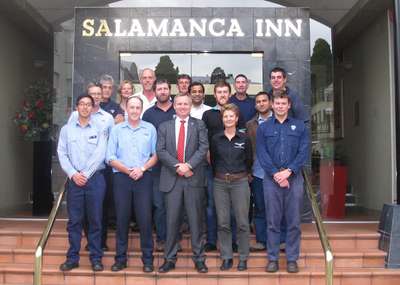Carp Workshop 2015

The Carp Management Program (CMP) held its annual two day workshop on 4 – 5 May to review the past year's work and undertake planning for the coming year. Alex Schaap, formerly the director of the Environment Protection Authority (EPA) was present to provide an independent review of the workshop and assisted in the development of a 2015/16 operational plan. The first day involved presentations from staff on key aspects of the program to the stakeholder group. This group consisted of representatives from the Inland Fisheries Advisory Council, the Tasmanian Land Conservancy, and the River Clyde Trust.
The presentations were aimed to give the stakeholders an understanding of how the CMP was progressing, while providing a catalyst for the team to build an operational plan on day two. The Deputy Premier, Jeremy Rockliff also attended the workshop. He was supportive of the progress being made and his words of encouragement were appreciated by the team and stakeholder group.
The second day allowed the team (with the valuable assistance of Alex Schaap), to workshop, interrogate and analyse the data to investigate opportunities to assist in the eradication of carp from Lake Sorell.
They key outcomes of the workshop were:
- Carp have been contained to Lake Sorell, and that Lake Crescent and the Clyde River remain carp free.
- A further 1 204 carp predominately from the 2009-10 cohort, were removed from Lake Sorell this financial year. A total of 41 200 carp have now been taken from this lake since 1995.
- Intensive fishing pressure during 2014-15 returned a dramatic decrease in catch per unit of effort compared to the previous year. It is estimated that at least 50 percent of the population was removed during this period.
- Four small carp captured during the summer were determined to have come from a spawning in 2013-14. Analysis of catch per unit effort data indicates that this cohort is very small and it is anticipated that it can be fished out along with the 2009-10 cohort.
- Intensive and targeted gill netting was identified as the primary method to eradicate carp by 2017‑18.